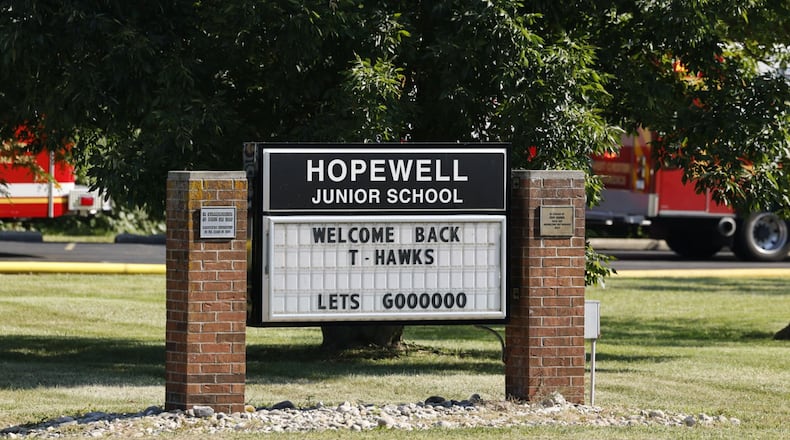“Our new grade bands would consolidate those to reduce those transitions for our students,’’ said Dr. Ashley Whitely, Lakota’s superintendent in a presentation to the West Chester Twp. Board of Trustees.
“Our freshman buildings would be consolidated into our main campuses to be the more traditional high school model of 9-12.”
Included in the plan are four new K-5 schools, building additions/renovations, and the possible closing of older schools - Adena; Freedom; Central/Creekside ECS/West Freshman (all one building); Heritage ECS; Hopewell ECS; Hopewell Junior; Liberty Junior; Shawnee ECS; and Woodland.
New schools may be built on some of the sites of the closed schools, Whitely said. Final decisions on locations for the new buildings haven’t been made yet.
West Chester Twp. trustee Ann Becker was concerned that many of the schools slated for closing were in West Chester Twp.
“What sort of impact will that have on our West Chester children, it does concern me,’’ Becker said.
“I just don’t want our West Chester kids having to go all the way out to Liberty Twp. (or have long bus travel time).”
Whitely said travel time would be kept at a minimum once the locations of the schools was finalized.
The plan was developed by a committee of educators, parents and community members. Four common themes emerged for the plan: fewer building transitions, flexible learning spaces, smaller class sizes, and safety/security.
To pay for the plan, the district has put a $506.4 million bond issue – 4.99 – mills on the Nov. 4 ballot. Voters will also see a .95-mill permanent improvement levy that would raise $4.98 million for renovation/maintenance of new and existing schools.
Through Ohio’s Expedited Local Partnership Program (ELLP), Lakota qualifies for a 32 percent reimbursement of approved project costs as defined by Ohio Facilities Construction Commission, said Adam Zink, district treasurer.
That group also rated existing schools according to their condition and recommended certain schools be considered for closing, based on their condition.
“Lakota Local Schools did not make these designations – ELPP did,’’ Whitely said.
If the ballot issue is approved, phase one of the master plan would be ready for the start of the 2028-2029 school year. It includes additions to East and West high schools, East Freshman and Plains Junior and moving to a 6-8 and 9-12 grade model.
Four new elementary buildings would be constructed and ready for the 2029-2030 school year, when the district would move to a K-5 configuration.
With voter approval in November, collections on the ballot issues won’t begin until 2029 to allow for the maturation and phase out of existing bonds in 2028, Zink said.
By waiting, the actual tax dollars collected would drop to no more than 2.66 mills, or $93.10 on a house valued at $100,000, Zink explained.
The lowered amount takes into account older bonds being paid off, current and projected property values, the district’s bond ratings and interest rates, school officials said.
“That’s a lot of money - $93 per $100,000. You’re talking about $400 (average) increase for our property owners. We just had an increase recently,” said Trustee Lee Wong.
“To me this is not a good idea at this time. I’m just shocked to hear this amount of increase on our property taxes.”
Trustee Mark Welch was also concerned about the cost, especially to older property owners.
“About 25 percent of the people of West Chester are over the age of 60 so if they’re not retired, they’re approaching retirement,” Welch said.
“A lot of times that means a fixed income. This is a lot of money for those folks.”
About the Author


